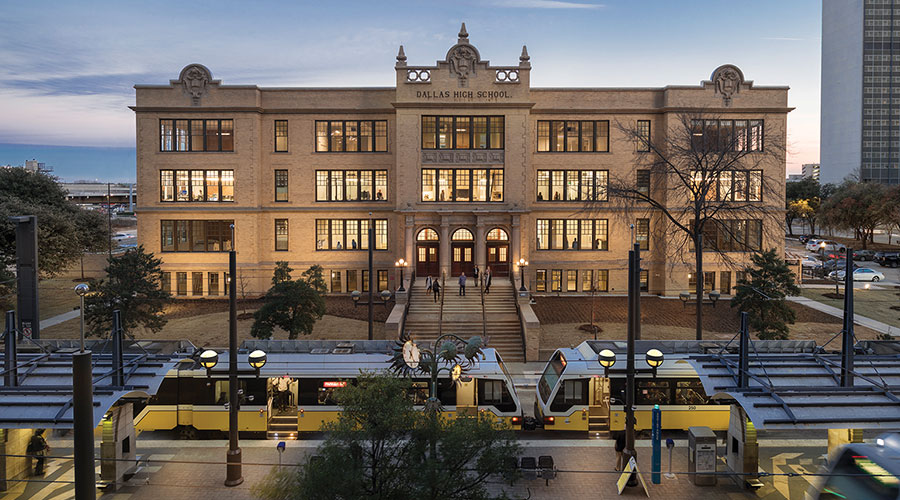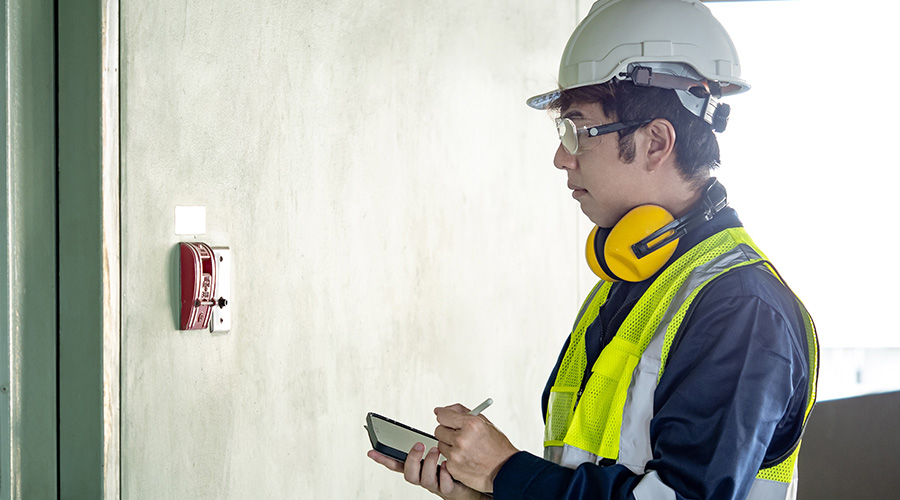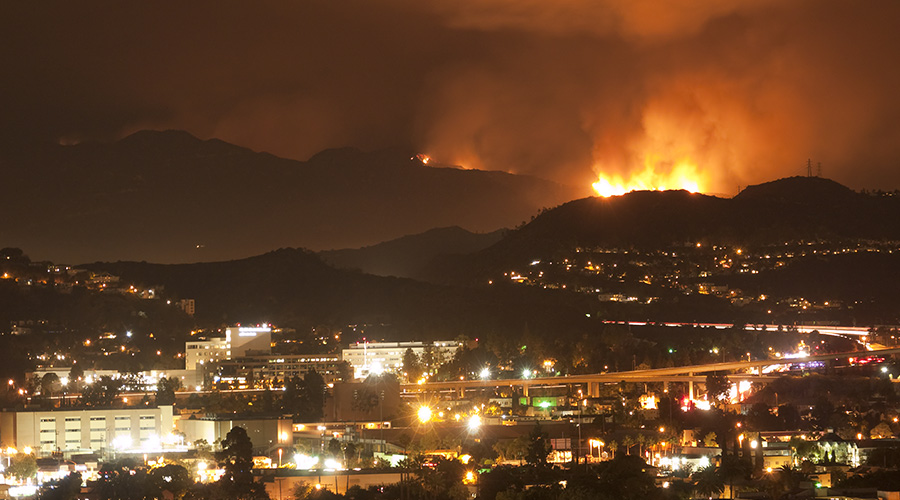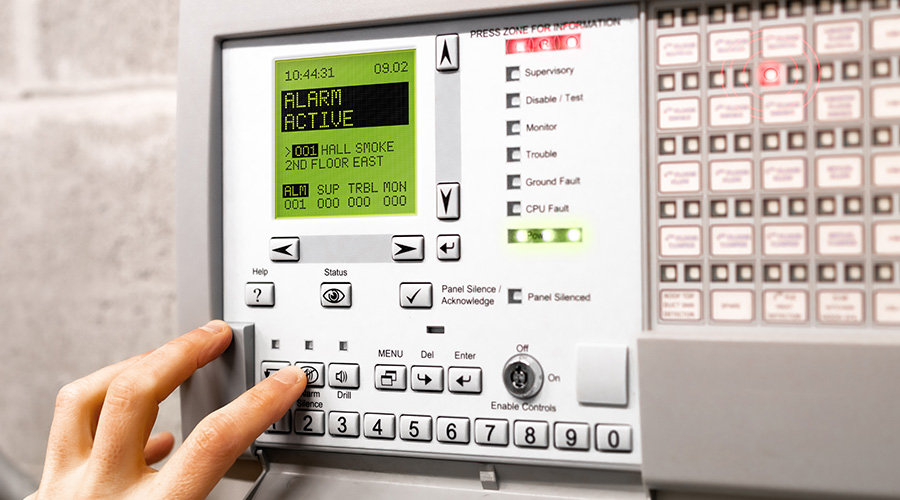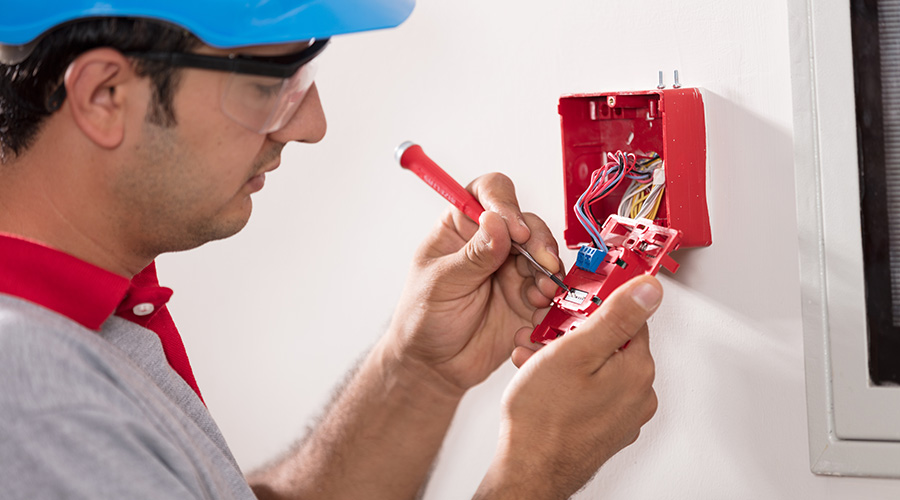Catching up
Upgrades to fire/life safety systems can bring substantial benefits to multitenant facilities at a reasonable cost
When potential tenants are touring a building, do they look at the life safety systems with the same interest as the cost, square footage and amenities? Probably not. Then later they sometimes wish they had. A significant amount of the work for fire protection engineers involves upgrades of tenant spaces for life safety after the lease is signed.
Changes turn out to be required to make the new tenant’s occupancy meet current code and also interface with the base building’s life safety features. These upgrades range from fire alarm notification, to fire sprinklers for dust-producing operations, to means-of-egress improvements.
Rather than having patchwork equipment installed when the building gets reworked by the tenant improvement architects and engineers, here are a few upgrades to consider. These upgrades can give a building new life — and perhaps attract new tenants. A few modern but basic life safety features can allow a building to compare favorably with the new buildings that potential tenants will likely be considering.
Fire Alarms
One feature to consider is a computer-based fire alarm system. These systems use technology similar to video games; they are no longer new technology.
The key concepts to understand are user interface and addressable devices. What these terms really mean is that a computer-based fire alarm system “knows everything” about every device connected to it and what that device is supposed to be doing. It knows whether each device is awake and operating, whether a device is sick, even whether a smoke detector is dirty or perhaps close to alarm. And it does all of this over a simple pair of wires, similar to an office computer network.
With all of these features, a property manager can tell a potential tenant that the fire alarm system is intelligent — like the ones in new buildings — and that it can provide monitoring for just about any occupancy use a tenant can think of. The tenant can install detectors and alarms wherever they are needed; the wiring is usually simple and normally does not require conduit. (It’s low voltage computer wire that is continually being checked on by the system.)
Prospective tenants will likely ask about tenant improvement costs. The answer is that a computer-based fire alarm system will be less costly to install, modify, maintain and troubleshoot than an old, non-addressable system. One reason is that each device has an address, like a computer on the network. That means a problem can be isolated to one device, not an entire circuit of devices — 20, maybe 30, possibly more — where every device has to be investigated before the offending device can be found.
A second reason costs are lower is that wiring does not have to be continuous from one device to the next. Wiring can be T-tapped, just like normal
110-volt circuit wiring, with only a device at the end of each leg. Changes and additions can be connected to the closest or most convenient wiring location, rather than running a new circuit. The new device is then programmed into the computer-based fire alarm system.
Another advantage is that a computer-based fire alarm system can often be integrated and combined with a tenant’s security system. Both systems use the same type of computer-based technology and normally the exact same dialer to call the monitoring service when a problem exists. Fewer accounts with the monitoring service mean lower operating cost.
Even though a new system can offer tenants improved functionality and lower tenant improvement costs, the property manager must still justify funding for the project. Perhaps the best course is to justify the new system based on lower costs of future maintenance associated with computer-based fire alarm systems. Improved flexibility and modest cost to upgrade from the current system are then added benefits.
The chart on page 61 shows estimated costs associated with computer-based fire alarm system upgrade and use. Note that the benefits exceed the new system cost when the system is large enough or requires frequent alterations or maintenance.
When performing a building modification or upgrade that requires substantial alteration of the existing alarm system, property managers should upgrade to the latest fire alarm control panel technology — the “brains” of the fire alarm system. All technologies offered for sale are required by NFPA-72 to be tested for complete functionality, so there is no such thing as unproven technology when it comes to fire alarm systems.
Sprinkler Systems
With the introduction of quick response fire sprinklers, facility executives now have tools to adjust to reduced pressure in the city water supply and occupancy changes and to improve aesthetics of buildings.
Quick response means that a sprinkler activates — reacts to the heat from a fire — faster, when the fire is smaller. Because of this, fewer sprinklers will activate. Standard response means the time for a sprinkler to activate is standard (longer than quick response) and therefore the fire is larger when water is first sprayed on it. As a result, more sprinklers will activate. Both quick response and standard response sprinklers spray the same pattern, spray the same amount of water and are spaced exactly the same. Therefore the exact same number of quick or standard response sprinkler heads are installed in a given type of building.
Older buildings that were constructed with standard response fire sprinklers can install quick response sprinklers and get the benefit of a reduced “remote area of application” when performing hydraulic calculations. (See “Remote Area of Application,” Page 66.) To understand why, it is important to remember that fire sprinkler systems are designed so that only the sprinklers in the direct vicinity of the fire — which is called the remote area of application — actually discharge water during a fire event, as opposed to all sprinklers in the building discharging.
Consider a fire sprinkler system that originally used standard response sprinklers and was designed for 0.1 gallons per minute of water flow per square foot, applied over 1,500 square feet. In that case, the city water supply would have to deliver 150 gallons per minute at the pressure required by the fire sprinkler that is installed.
If quick response fire sprinklers were retrofitted, a reduction of 40 percent in the 1,500 square foot area of application could be applied if the building has a 10-foot or less ceiling height. This means that water would have to be sprayed over only 900 square feet at the hydraulically most remote location where a fire could occur.
The city water supply would therefore only have to deliver 90 gallons per minute at the pressure required by the fire sprinkler installed. The principle is the same as a garden hose at home — if the hose nozzle is closed to reduce the amount of water that sprays out, the result is more pressure.
The use of quick response sprinklers can offset the effects of reductions in pressure in city water supplies that sometimes occur over time. Retail malls built before construction of surrounding housing or commercial development may be particularly susceptible to degraded water supplies and can usually benefit greatly. Buildings with 10 to 20 foot ceilings can take a 25 to 40 percent reduction in the remote area of application. Higher ceilings mean less reduction. Buildings with ceiling heights over 20 feet are not allowed to take a reduction.
Occupancy changes that might require a higher water density of fire sprinkler coverage can potentially be offset by the use of quick response sprinklers. A higher water density can be offset by a reduced remote area of application when hydraulic calculations are performed.
Another recent offering from most sprinkler manufacturers is an enclosure type of covering for sidewall fire sprinklers to conceal them. Use of these coverings can reduce the likelihood of damage to heads and inadvertent sprinkler discharge, especially in hotels, where guests might hang clothing on the sprinklers. What’s more, the coverings can help make the room look better.
Directional Devices
Old-style fire alarm horns use frequencies that make it difficult for people to determine the direction from which the sound is coming. A relatively recent development, known as the directional fire alarm notification device, uses sound frequencies to help occupants determine direction. The loudness is the same as with traditional fire alarm horns; the difference is that building occupants can recognize what direction the sound is coming from. That can be important when a person’s view is obscured by smoke. The directional fire alarm notification device is placed only near the building exit locations so people move in the correct directions. Old-style horns are still installed to provide volume, but not to indicate the direction of an exit.
Since deaths during a fire event sometimes involve disorientation and smoke inhalation, having a way to “hear” the direction to the exit can be very important. Strobes were developed to address Americans with Disabilities Act (ADA) concerns about alarm notification.
Directional fire alarm notification devices take it a step further. They can help not only persons with hearing or visual disabilities, but virtually everyone.
When existing or historic buildings have fire safety deficiencies related to exiting that cannot be upgraded without substantial changes to the building, directional sounding devices can sometimes be used to offset such conditions.
Lighting the Way
Facility executives can make it easier for building occupants to find and follow the exit path when there is little or no light by installing photoluminescent signs or striping. Photoluminescent products glow in the dark to mark a path to the exit. They enable facility executives to improve the ability of occupants to find the building’s egress path without the expense of emergency electrical connections. Emergency electrical systems cannot be modified without substantial expense. So new exit signage must be independent of the need for code-required emergency electrical power sources. With photoluminescent signs, adding exit signage is simple. When use of a building changes, so can the exit signage.
Photoluminescent markings for life safety applications have already been put through the “standards” process. New York City Local Law 26 has established a set of standards for photoluminescent markings, so the variability of new vendors and new products is no longer a concern. The World Market Center in Las Vegas, a high-rise building where furniture is showcased by manufacturers, has installed photoluminescent signs and markings based on the New York City standards in their new building addition.
Use of photoluminescent marking materials to improve building safety can surely be a selling feature to tenants looking into occupying an existing building. Pointing out that an existing building has photoluminescent markings to enhance life safety for both employees and customers may help win over a prospective tenant.
Economics of Fire Alarm Upgrades
An older, non-addressable fire alarm system will incur higher costs for maintenance and alterations than a new addressable system. If the present value of those additional costs is greater than the price of the new fire alarm panel, there’s a strong reason to upgrade.
|
READY FOR ACTION
Inspecting Smoke Control Systems
An important, but sometimes overlooked, aspect of an effective fire/life safety system is the smoke control system, which is required for high-rise buildings. Keeping that system in a fully functional state is just as important as having the building’s fire extinguishers checked. It is necessary to ensure that this “standby” system will be ready when needed. In most buildings, the smoke control system does not routinely function as a part of the constantly operating HVAC system.
Explaining to a prospective tenant how annual testing ensures that this crucial emergency system will function properly could help sell the space.
Annual inspection and testing offers many advantages. For example, it can reveal damper problems or fans that might have been inadvertently turned off. It can also identify recalls of smoke damper equipment before the recall expires.
It sometimes happens that no one looks at the smoke control equipment for several years. During that stretch of time, it is possible that building maintenance activities required de-energizing this equipment — and in some cases it is never re-energized. Annual inspection and testing can keep maintenance personnel aware of the existence of smoke control systems and the need for keeping the associated equipment operational.
|
LEXICON
Remote Area of Application
When water flows through sprinkler system piping, the lowest pressure occurs at the remote point in the system. Therefore, that remote point is where the area of application is assumed to be (i.e., where the fire occurs). Sprinklers in all other less restrictive areas of application will have higher pressures and therefore spray more water on the fire than in the remote area of application.
|
Robert Brady, PE, is a project manager in the Las Vegas office of Schirmer Engineering, which provides engineering and technical services in areas that include fire and life safety, security, emergency planning, and building code consultation.
Related Topics:






